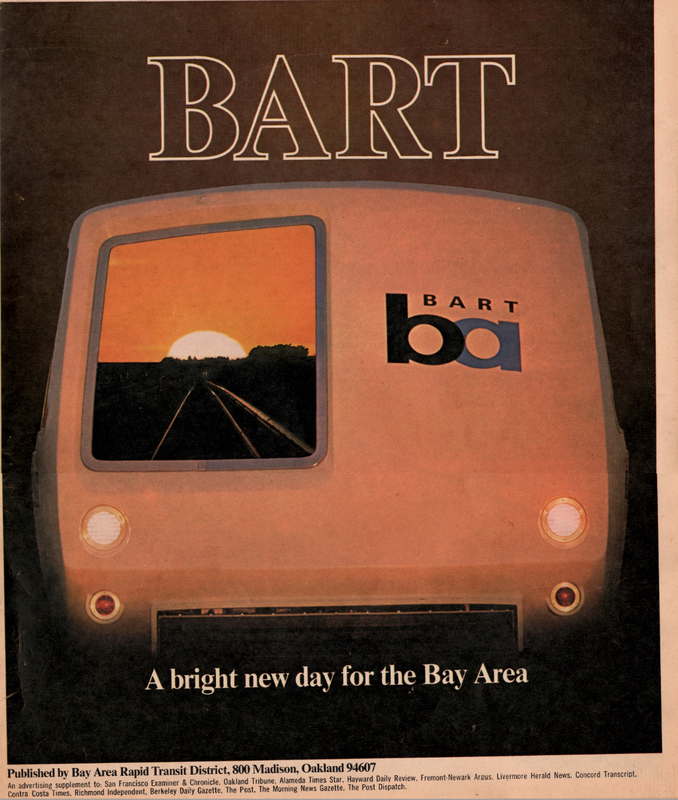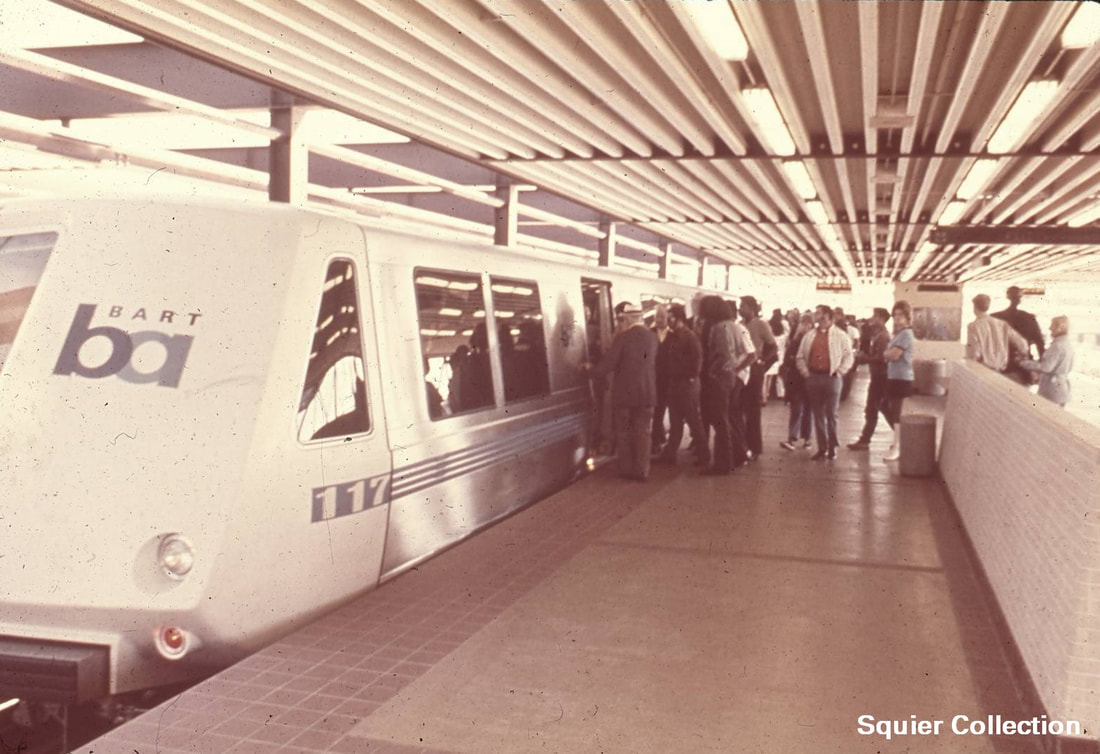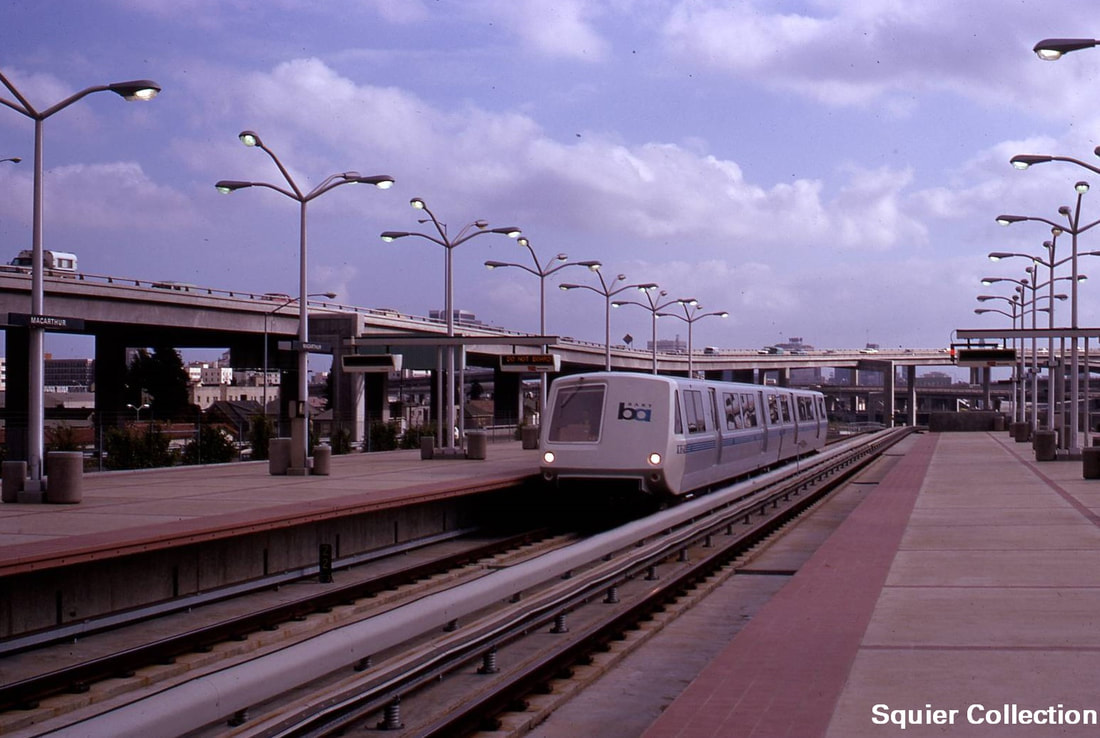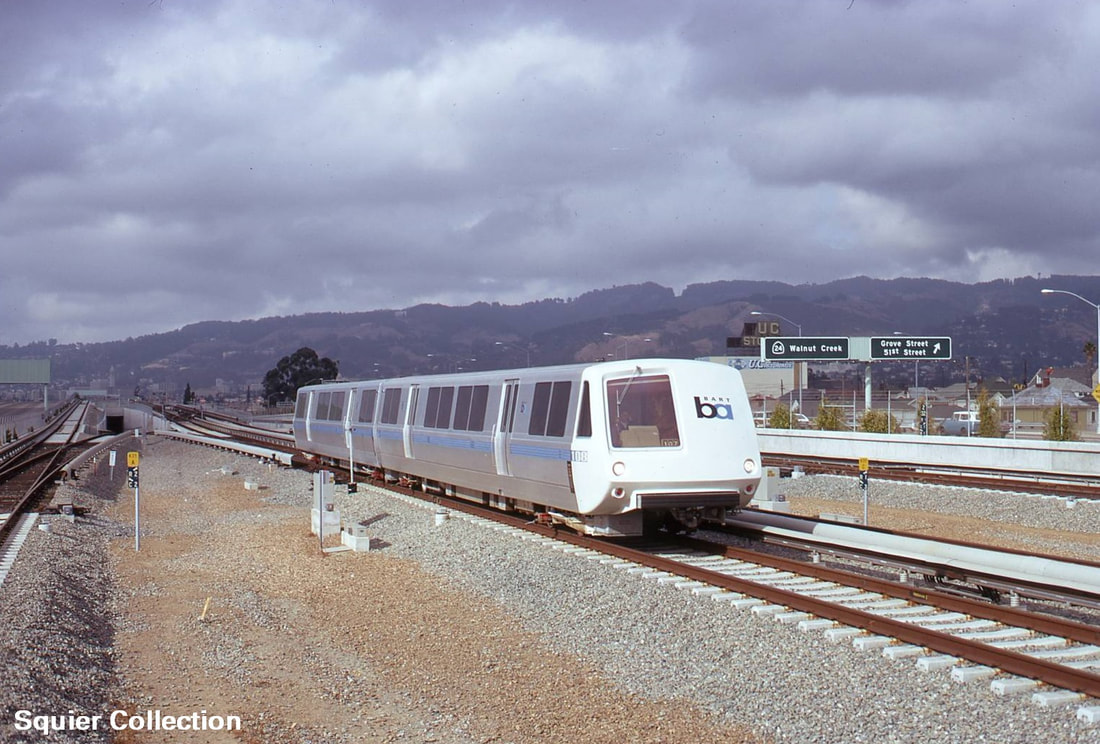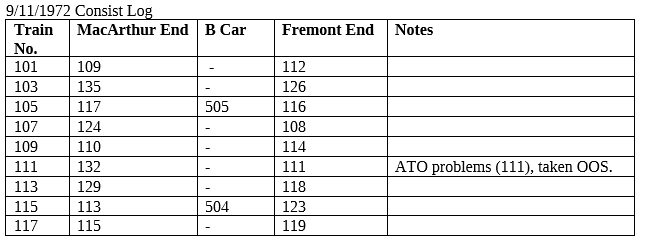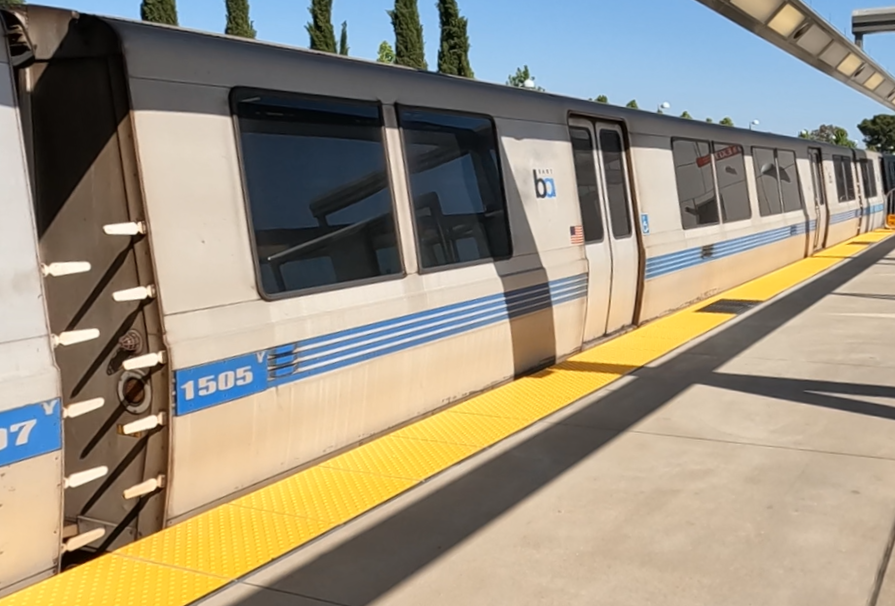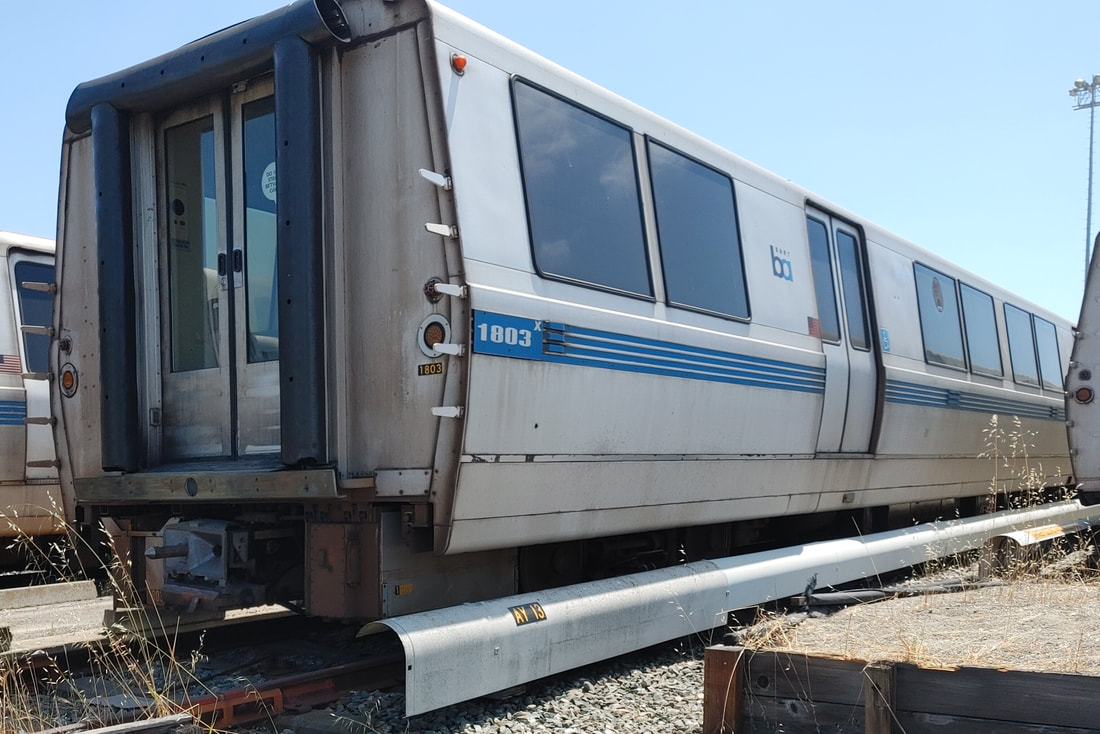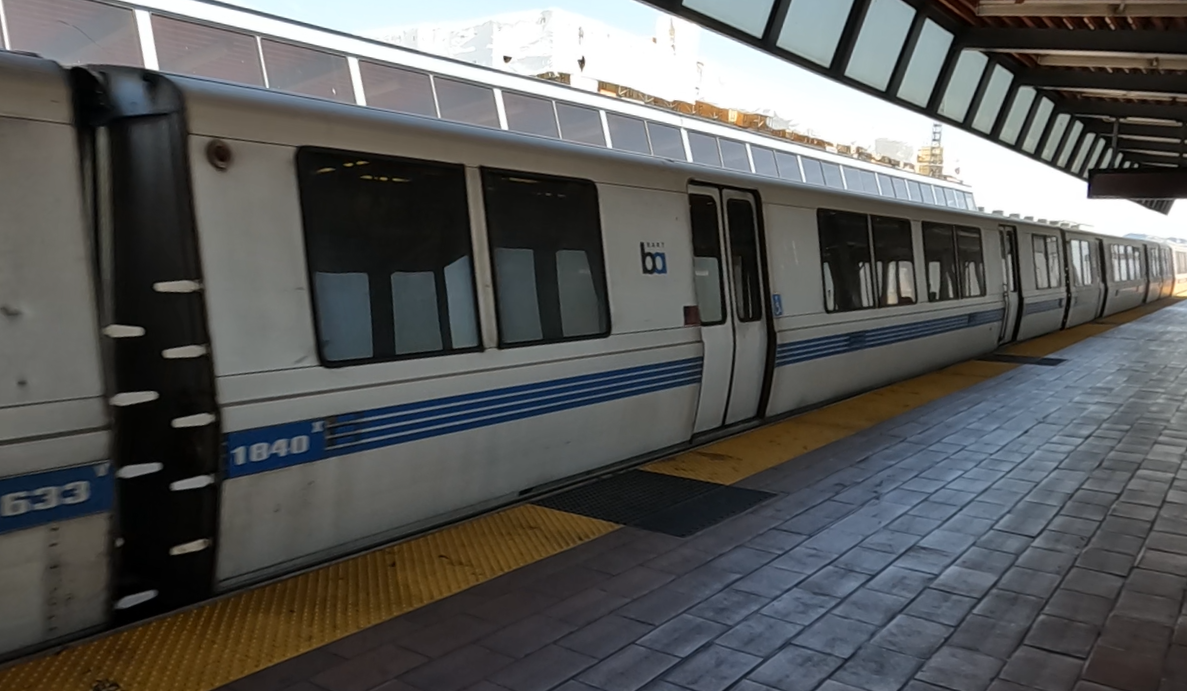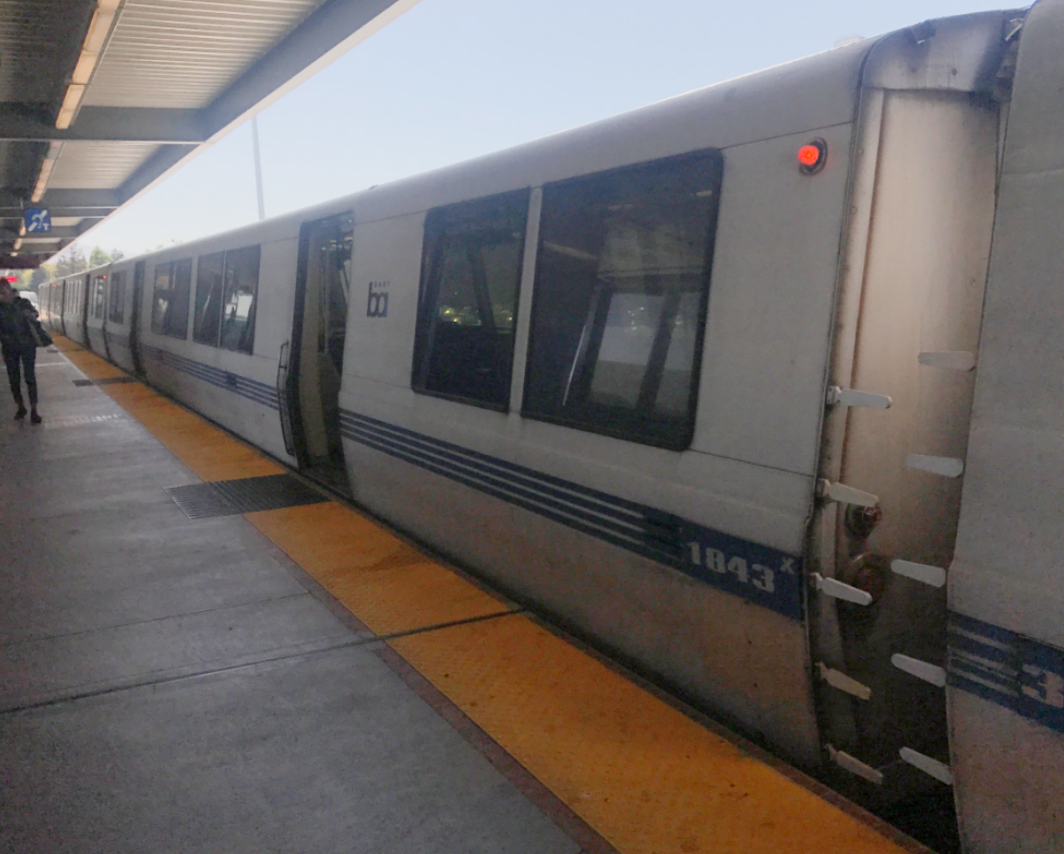BART's Opening Day: September 11, 1972
Pride of the Bay: A Bright New Day for the Bay Area
…and a bright new day it was. Signaling the start of a new era in rail transit, an A-car shows its good side in the first page of this commemorative publication.
Bowing to political pressure following years of delays (for reference, back in 1965 they promised an opening date of 1968), BART aimed to open as soon as safely possible. Westinghouse’s top management handed over a functional train control system to BART on June 1, 1972, and BART Operations required a three-month period for testing and training before revenue service. Thus, September 1, 1972 became the target. However, BART management desired opening the system on a Monday, of which the soonest was September 4, 1972 – Labor Day. As a result, management selected the following Monday, September 11, 1972 as the opening date for the system. “Little did anyone dream that that date would, some 29 years, come to signify something else to the American people.”
Bowing to political pressure following years of delays (for reference, back in 1965 they promised an opening date of 1968), BART aimed to open as soon as safely possible. Westinghouse’s top management handed over a functional train control system to BART on June 1, 1972, and BART Operations required a three-month period for testing and training before revenue service. Thus, September 1, 1972 became the target. However, BART management desired opening the system on a Monday, of which the soonest was September 4, 1972 – Labor Day. As a result, management selected the following Monday, September 11, 1972 as the opening date for the system. “Little did anyone dream that that date would, some 29 years, come to signify something else to the American people.”
That explained, BART opened its doors to its first revenue riders at Noon on September 11, 1972, following a series of speeches and VIPs rides at 10:00 AM. Eight trains – six two car trains and two three car trains, carried passengers between MacArthur and Fremont stations. An additional ninth train, dispatched in the mid-afternoon, was similarly composed of two A cars, while another two-car consist, in reserve in case of a breakdown, was not used during the day.
The short length of trains was out of necessity since only 2 production B cars were delivered. Rohr later prioritized B car production by October.
The short length of trains was out of necessity since only 2 production B cars were delivered. Rohr later prioritized B car production by October.
As stated in the book, Off and Running: “A time when B-cars were almost non-existent and the curious came to see what their taxes had purchased. A time that is never to be repeated, the birth of a railroad.” –Karn R. Koening, Editor, Pacific News
On September 11, 1972, the fleet numbered 28 cars. Of those 28 cars, 18 were out in scheduled service (64%), and by the day’s end, 20 (71%) had rolled in service. The cars were as follows, displayed in the form of a consist log:
The story does not end here; almost all of these cars ran in service for fifty years!
The A cars, numbered in the 100s, were all converted into B and finally B2 cars (numbered in the 1800s) by the early 2000s. The B cars, 504 and 505, were similarly rebuilt into B2 cars in 2000.
Based on the consist log above:
By September 11, 2022, only one “Day One” car was scrapped – the 1844, leaving 27 cars in service 50 years after they first carried the curious, coming to see what their taxes had purchased.
Indeed, seven cars (1505, 1803, 1829, 1838, 1840, 1843, 1845) were in service on 9/11/2022, becoming the first BART cars to reach the milestone of 50 years of revenue service.
The A cars, numbered in the 100s, were all converted into B and finally B2 cars (numbered in the 1800s) by the early 2000s. The B cars, 504 and 505, were similarly rebuilt into B2 cars in 2000.
Based on the consist log above:
- A car 109 became B car 803, then B2 car 1803; 112 became B2 car 1840
- 135 became 1861, 126 became 1815
- 117 became 806 then 1806, 505 became 1505, 116 became 1856
- 124 became 1843, 108 became 818 then 1818
- 110 became 1845, 114 became 1855
- 132 became 1862, 111 became 1848
- 129 became 1859, 118 became 1824
- 113 became 1854, 504 became 1504, 123 became 829 then 1829
- 115 became 1841, 119 became 1844
By September 11, 2022, only one “Day One” car was scrapped – the 1844, leaving 27 cars in service 50 years after they first carried the curious, coming to see what their taxes had purchased.
Indeed, seven cars (1505, 1803, 1829, 1838, 1840, 1843, 1845) were in service on 9/11/2022, becoming the first BART cars to reach the milestone of 50 years of revenue service.
To note, of the approximately 500 employees on Day 1, 177 were still at BART 25 years later.
Day One was also the day of other firsts in the system, all of which were at MacArthur. They included: First lost child, first lost husband, and first fall of a passenger (while riding an escalator).
In the larger picture, BART provided a few firsts and records on its opening day:
Day One was also the day of other firsts in the system, all of which were at MacArthur. They included: First lost child, first lost husband, and first fall of a passenger (while riding an escalator).
In the larger picture, BART provided a few firsts and records on its opening day:
- 100% usability - every station - for the handicapped.
- Fastest rapid transit system, in both average speed and maximum speed
- Most advanced train control system
- Most advanced railcars
Last updated: 7/4/2023

